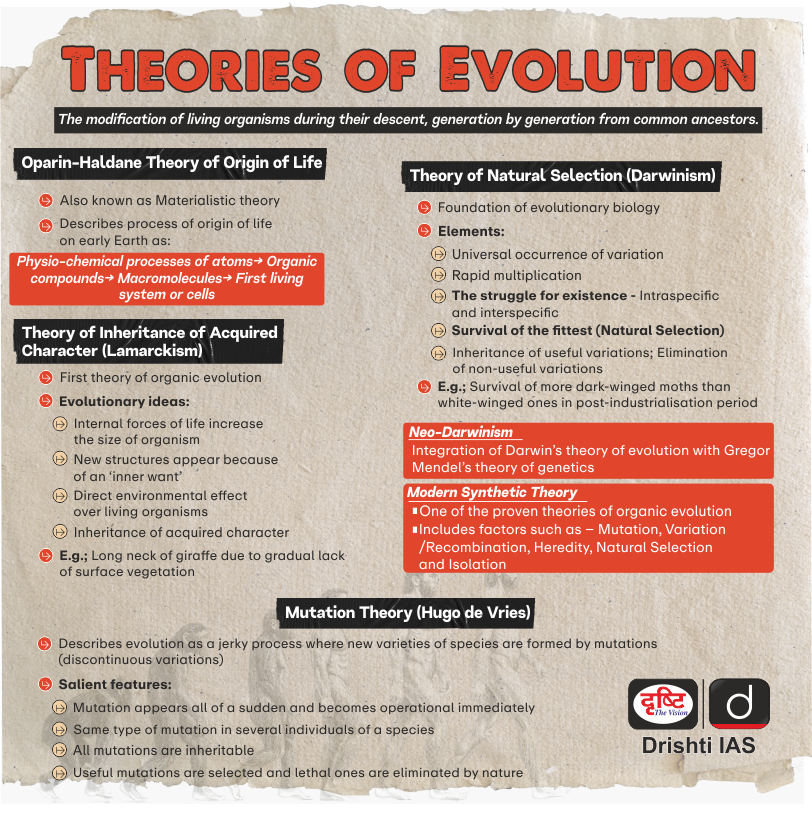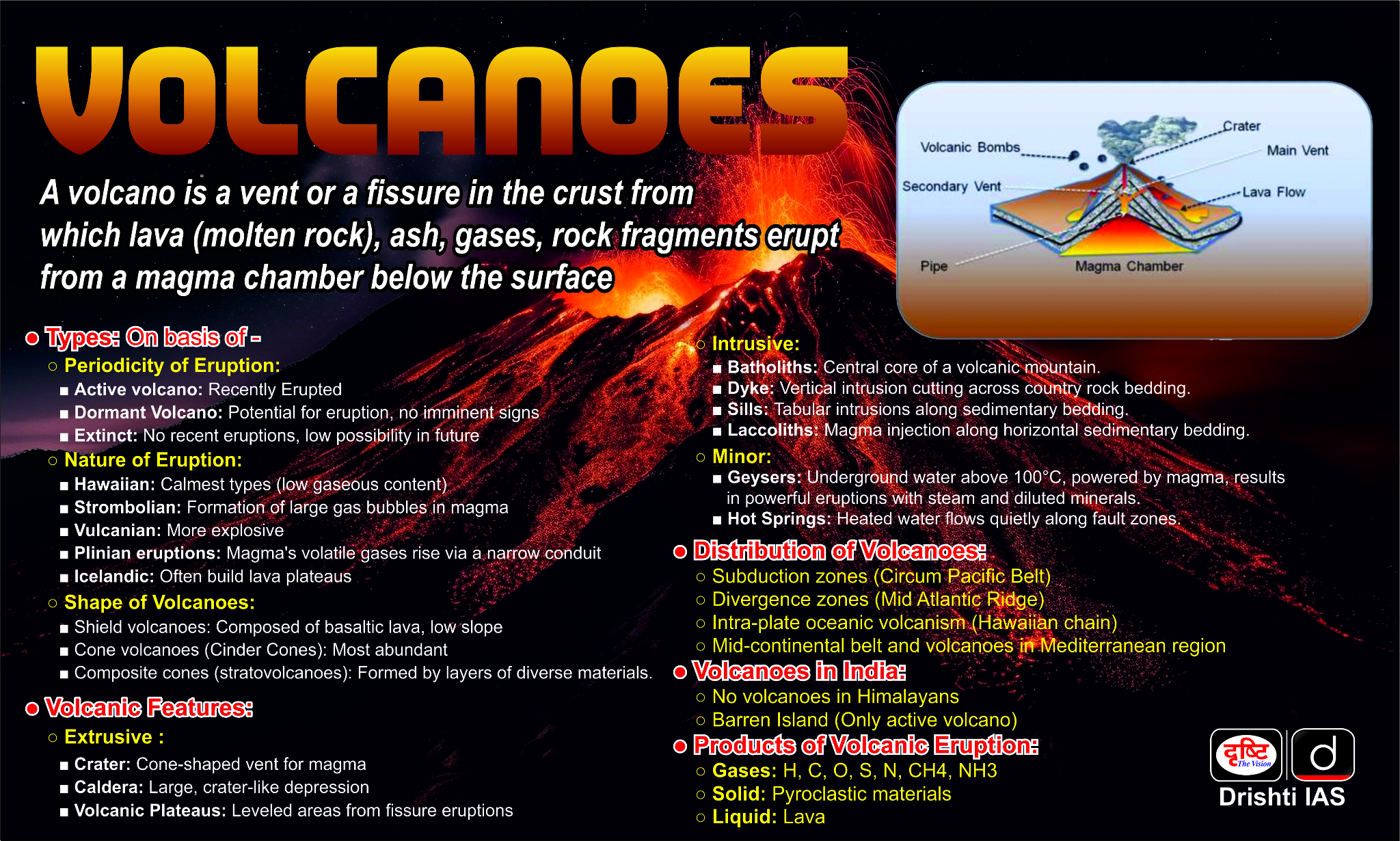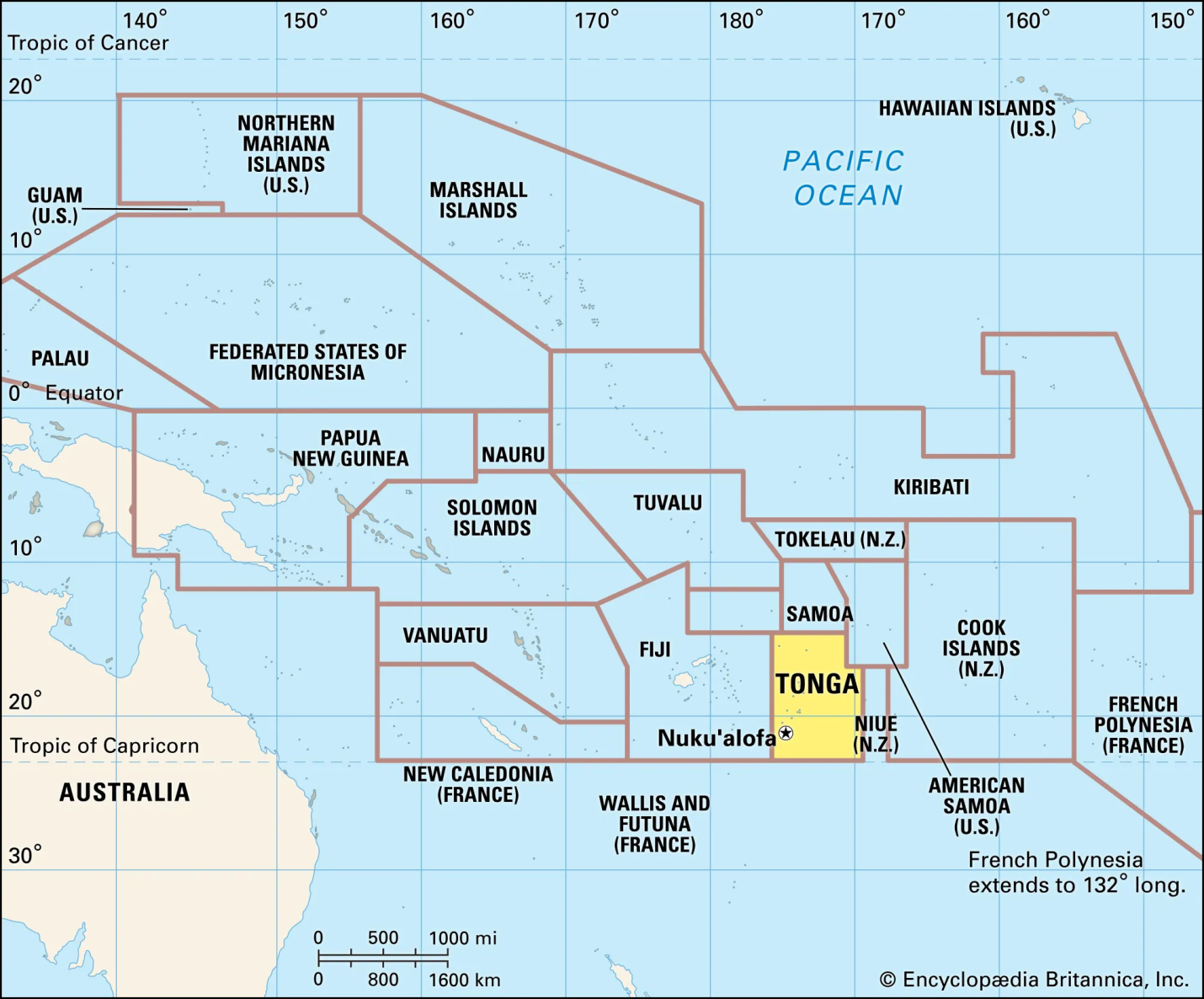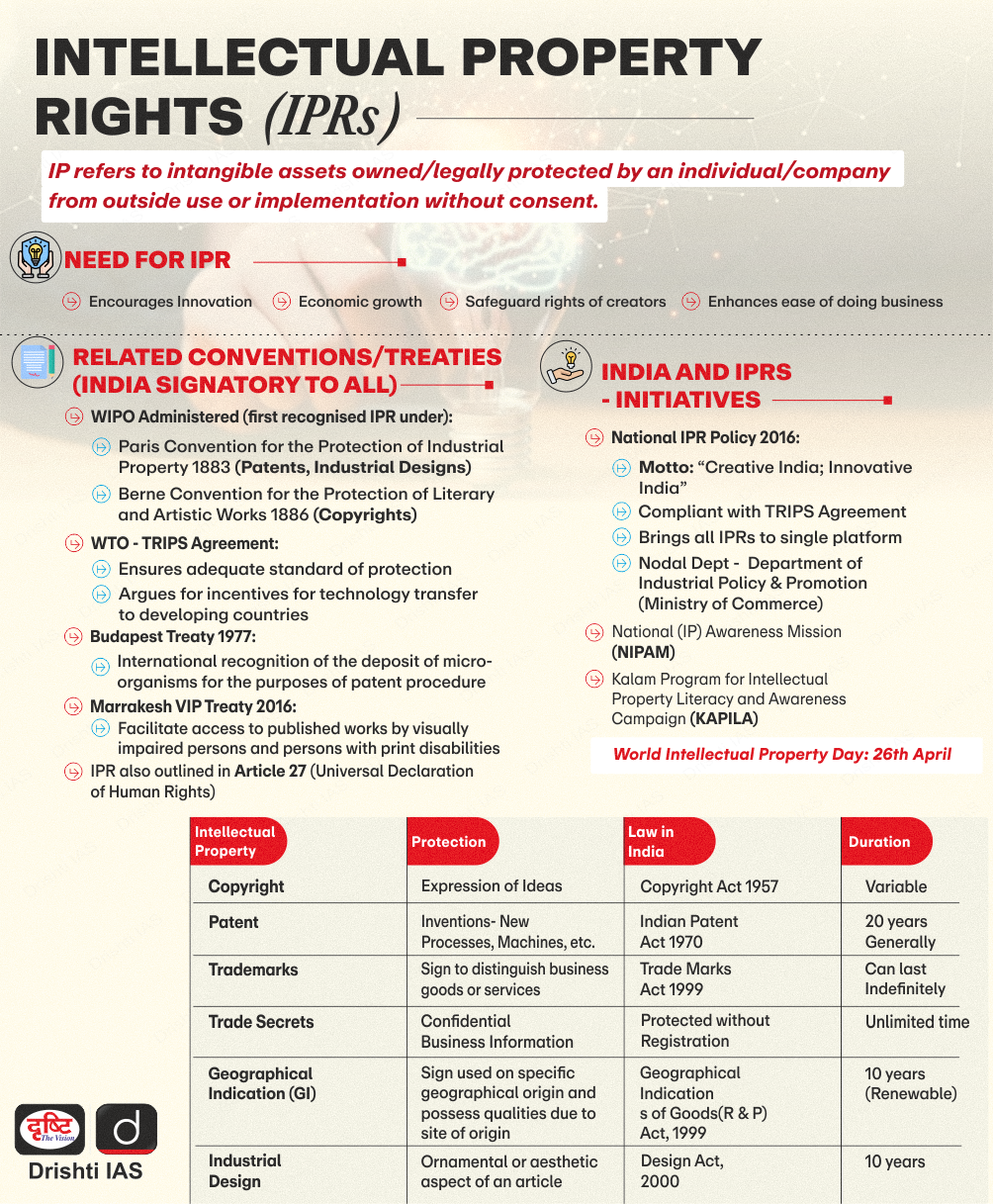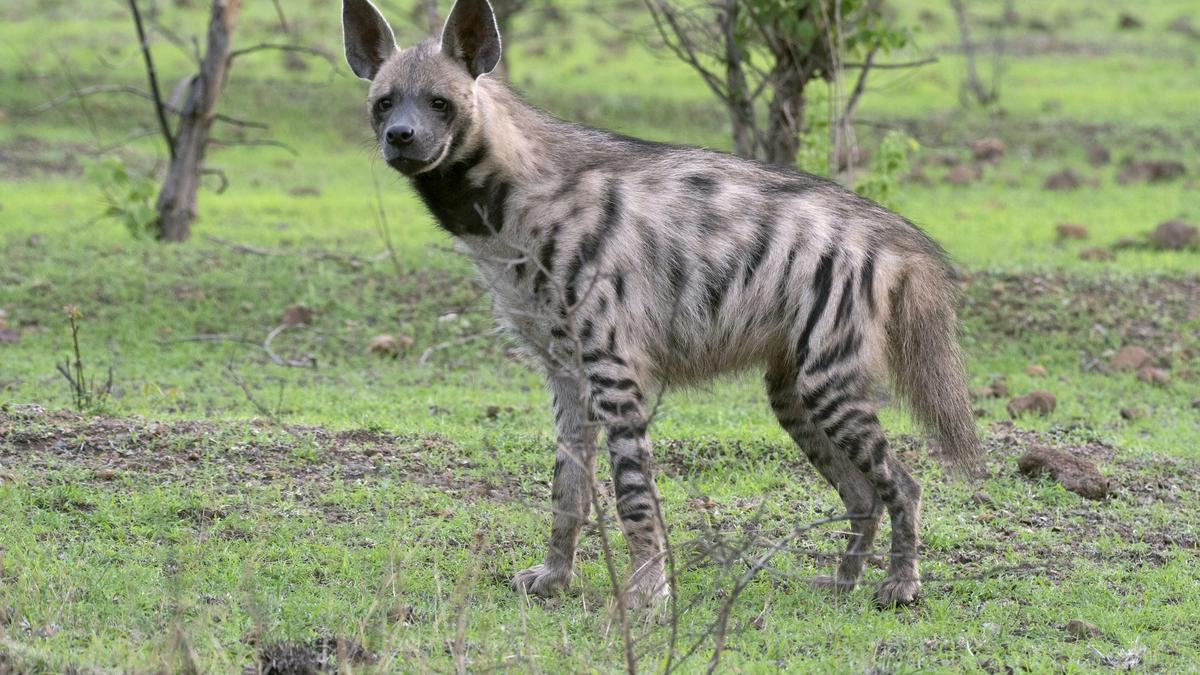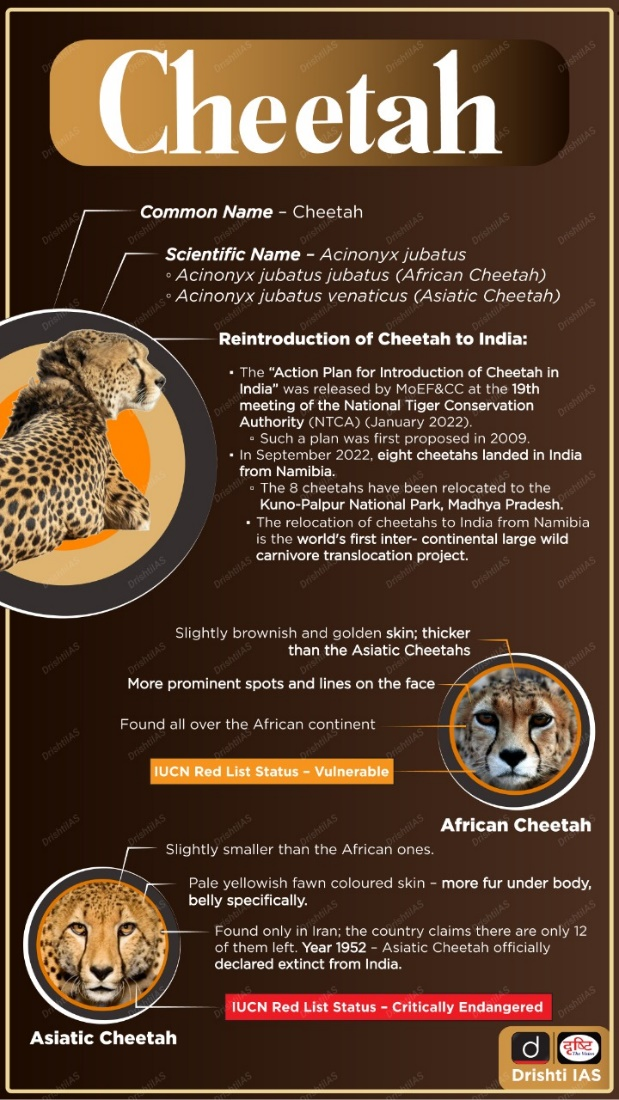Infographics
Geography
Tonga Volcano Impacting Weather
For Prelims: Hunga Tonga-Hunga Ha'apai, Pinatubo, Krakatoa, Tambora, Samalas, Greenhouse Gases, El - Nino, Paris Agreement, IPCC, Cooling credits, Sun dimming.
For Mains: Effect Of Volcano On Global Warming, Types of volcano
Why in News?
A recent study published in the Journal of Climate revealed that the eruption of the Hunga Tonga-Hunga Ha’apai Volcano in January 2022 has had significant implications for global weather patterns.
Hunga Tonga-Hunga Ha’apai Volcano
- It is an Undersea Volcanic Eruption consisting of two small uninhabited islands, Hunga-Ha’apai and Hunga-Tonga.
- The volcano has erupted regularly over the past few decades.
- This is one of the massive explosions the volcano is capable of producing roughly every thousand years.
- One of the reasons for it being highly explosive is the Fuel-Coolant interaction.
- The Hunga Tonga eruption's unique characteristic of injecting massive water vapour into the stratosphere.
- Usually, volcanic smoke, which mostly contains sulphur dioxide, leads to a temporary cooling of the Earth's surface.
- The sulphur dioxide turns into sulphate aerosols, which reflect sunlight into space, causing the surface to cool down until the sulphate settles back on the surface or is washed out by rain.
- Usually, volcanic smoke, which mostly contains sulphur dioxide, leads to a temporary cooling of the Earth's surface.
What are the Effects of the Hunga-Tonga Volcano on the Climate?
- Extraordinary Ozone Hole in 2023:
- Since, Hunga Tonga is an underwater volcano, it produced 100-150 million tonnes of water vapour during its eruption, raising the amount of water in the stratosphere by around 5%.
- This water vapour in the stratosphere contributes to the destruction of the ozone layer and acts as a potent greenhouse gas.
- The study found that the large ozone hole observed from August to December 2023 was at least partly due to the Tonga eruption.
- This ozone hole was almost two years in advance, as the water vapour from the eruption had enough time to reach the polar stratosphere over Antarctica.
- Since, Hunga Tonga is an underwater volcano, it produced 100-150 million tonnes of water vapour during its eruption, raising the amount of water in the stratosphere by around 5%.
- Wet Summer of 2024 in Australia:
- The study predicted a positive phase of the Southern Annular Mode during the summer of 2024, leading to a higher chance of a wet summer in Australia.
- This was contrary to the expected El Niño conditions.
- Regional Weather Disruptions:
- The study predicts colder and wetter than usual winters for the northern half of Australia up to around 2029.
- North America may have warmer than usual winters, while Scandinavia can have colder than usual winters.
- These regional weather patterns are attributed to the Tonga eruption's impact on the way atmospheric waves travel, which directly influences local weather conditions.
- This emphasises the need for region-specific climate predictions and adaptation strategies.
- Minimal Impact on Global Temperatures:
- The impact of the eruption on global mean temperatures was very small, around 0.015°C.
- The incredibly high temperatures observed for about a year cannot be attributed to the Tonga eruption.
Undersea Volcano
- The undersea volcanic eruption happens in a volcano which is located under the ocean surface. There are an estimated one million undersea volcanoes, and most of them are located near the tectonic plates.
- Apart from lava, these openings also spew out ash. These deposit on the ocean’s floor and lead to the formation of sea mounds (underwater mountains that are formed on the ocean floor but do not reach the water surface).
Fuel-Coolant Interaction
- If magma rises into seawater slowly, even at temperatures of about 1200 degrees Celsius, a thin film of steam forms between the magma and water. This provides a layer of insulation to allow the outer surface of the magma to cool. But this process doesn’t work when magma is blasted out of the ground full of volcanic gas.
- When magma enters the water rapidly, any steam layers are quickly disrupted, bringing hot magma in direct contact with cold water. It is akin to weapons-grade chemical explosions.
- Extremely violent blasts tear the magma apart.
- A chain reaction begins, with new magma fragments exposing fresh hot interior surfaces to water, and the explosions repeat, ultimately jetting out volcanic particles and causing blasts with supersonic speeds.
Tonga
- Tonga is an island country in Polynesia, part of Oceania, with 171 islands, of which 45 are inhabited.
- The country spans approximately 800 km north-south and is surrounded by Fiji, Wallis and Futuna, Samoa, New Caledonia, Vanuatu, Niue, and Kermadec.
- Tonga has a tropical rainforest climate. The economy relies heavily on remittances from Tongans living abroad, particularly in Australia, New Zealand, and the United States.
- The economy focuses on small-scale industries like handicrafts and agriculture, with efforts to enhance sectors such as tourism and communications.
- The largest ethnic group in Tonga is Tongan, followed by a mix of Tongans, Chinese, Fijians, Europeans, and other Pacific Islanders.
|
Drishti Mains Question: Discuss the factors leading to volcanic eruptions. Also, suggest mitigation strategies for managing volcanic hazards in India. |
UPSC Civil Services Examination, Previous Year Question (PYQ)
Prelims
Q. Consider the following: (2013)
- Electromagnetic radiation
- Geothermal energy
- Gravitational force
- Plate movements
- Rotation of the earth
- Revolution of the earth
Which of the above are responsible for bringing dynamic changes on the surface of the earth?
(a) 1, 2, 3 and 4 only
(b) 1, 3, 5 and 6 only
(c) 2, 4, 5 and 6 only
(d) 1, 2, 3, 4, 5 and 6
Ans: (d)
Mains:
Q. Discuss about the vulnerability of India to earthquake related hazards. Give examples including the salient features of major disasters caused by earthquakes in different parts of India during the last three decades. (2021)
Q. Why are the world’s fold mountain systems located along the margins of continents? Bring out the association between the global distribution of fold mountains and earthquakes and volcanoes. (2014)
Q. Mention the global occurrence of volcanic eruptions in 2021 and their impact on regional environment. (2021)


Indian Polity
Personality Rights
For Prelims: Personality Rights, Rights to Privacy, Article 21, Artificial Intelligence (AI).
For Mains: Awareness in the fields of IT, Space, Computers, robotics, nano-technology, bio-technology, and issues relating to intellectual property rights.
Why in News?
The recent dispute between Hollywood Actress and OpenAI highlights the importance of personality rights in the context of Artificial Intelligence (AI) models.
- The actress accused OpenAI, the artificial intelligence company behind ChatGPT, of using her voice despite having previously declined licensing requests from the company's CEO.
- Earlier, the New York Times (NYT) took legal action against OpenAI and Microsoft, alleging the unauthorised use of its copyrighted content to train AI models, including ChatGPT.
What are Personality Rights?
- About:
- Personality rights refer to an individual’s right to protect their personality, which is a part of the broader right to privacy or property.
- These rights encompass various aspects of a celebrity’s public persona, including its name, voice, signature, images, distinctive features, mannerisms, poses etc.
- Types:
- Right to Privacy:
- This protects an individual's control over their personal information and affairs.
- It prevents unauthorised disclosure of personal details or intrusion into one's private life
- It is affirmed by the Supreme Court judgement on the Puttaswamy v Union Of India, 2017 Case.
- Right of Publicity:
- This grants individuals control over the commercial use of their name, image, likeness, or other recognisable characteristics.
- They can choose whether and how these aspects of their identity are used for product endorsements or advertising.
- Right to Privacy:
- Importance:
- These rights are important to celebrities as their names, photographs or even voices can easily be misused in various advertisements by different companies to boost their sales.
What is the Status of Personality Rights in India?
- While personality rights are not explicitly mentioned in Indian statutes, they are protected through principles related to privacy and property rights.
- Key legal Provisions include:
- Article 21 of the Indian Constitution:
- While there is no specific statute solely for personality rights, the right to privacy enshrined in Article 21 of the Constitution offers the closest legal protection in India.
- Copyright Act, 1957:
- The Copyright Act of 1957, while not directly addressing personality rights, offers some tangential protection through concepts like "passing off" and "deception" in Intellectual Property Rights (IPR) cases.
- "Passing off" occurs when someone misrepresents their goods or services as belonging to someone else.
- This can be relevant to personality rights if:
- Someone uses a celebrity's name or image to endorse a product without their permission, creating the impression that the celebrity is associated with the product.
- Someone creates a character or image that is so similar to a well-known personality that it deceives the public into thinking it's the real person.
- Deception is when someone uses a person's name or likeness in a way that is deceptive or misleading, it might be possible to argue copyright infringement, especially if the use harms the reputation of the person.
- Indian Trademarks Act, 1999:
- Section 14 restricts the use of individual names and representations.
- Court Judgments:
- Courts have recognized the right of publicity, allowing celebrities to protect their name, likeness, and persona from unauthorised use.
- In Krishna Kishore Singh vs Sarla A Saraogi Case, 2021, the Supreme Court of India held that the right to publicity is distinct from the right to privacy.
- The court emphasised that public figures have a similar right of publicity. It affirmed that publicity rights are inheritable and devisable.
- In its Arun Jaitley vs. Network Solutions Private Limited, 2011, the Delhi High Court observed that an individual's popularity or fame is equally significant on the internet as in real life.
- The court also stated that a name, besides being a personal identifier, can acquire its own distinctive significance.
- Examples:
- In May 2024, the Delhi High Court upheld Jackie Shroff's personality and publicity rights, restraining various e-commerce stores, AI chatbots, and others from using the actor's name, image, voice, and likeness without his consent.
- Similarly, in September 2023, actor Anil Kapoor also received legal protection for his image rights.
- The Delhi High Court placed restrictions on 16 entities, prohibiting them from using his name, image, or likeness for commercial purposes.
- In the 2010 case of D.M. Entertainment Pvt. Ltd. vs. Baby Gift House, Daler Mehndi's company emerged victorious in the Delhi High Court. The case involved shops selling dolls that mimicked Mehndi's appearance and sang his songs.
- The court upheld Mehndi's right to control his public image commercially.
- Article 21 of the Indian Constitution:
What is the Status of AI Regulation in India?
- No Specific Regulation for AI in India:
- Currently, India does not have a specific regulation for artificial intelligence (AI).
- But various advisories, guidelines, and IT rules from time to time have provided legal supervision for the advancement of AI, Generative AI, and large language models (LLM) in India.
- NITI Aayog's Leadership:
- In 2018, NITI Aayog released the "National Strategy for Artificial Intelligence #AIForAll" outlining responsible development and deployment of AI in healthcare, agriculture, education, and smart infrastructure.
- Data Protection & Global Collaboration:
- The recently enacted Digital Personal Data Protection Act (2023) empowers the government to address privacy concerns arising from AI use.
- Additionally, India's membership in the Global Partnership on Artificial Intelligence (GPAI) fosters collaboration on responsible AI development, data governance, and ethical considerations.
|
Drishti Mains Question: Discuss the legal framework for personality rights in India. Analyse the challenges in reconciling them with the right to freedom of speech. |
UPSC Civil Services Examination Previous Year Question (PYQ)
Q.1 ‘Right to Privacy’ is protected under which Article of the Constitution of India? (2021)
(a) Article 15
(b) Article 19
(c) Article 21
(d) Article 29
Ans: (c)
Q.2 Right to Privacy is protected as an intrinsic part of Right to Life and Personal Liberty. Which of the following in the Constitution of India correctly and appropriately imply the above statement? (2018)
(a) Article 14 and the provisions under the 42nd Amendment to the Constitution.
(b) Article 17 and the Directive Principles of State Policy in Part IV.
(c) Article 21 and the freedoms guaranteed in Part III.
(d) Article 24 and the provisions under the 44th Amendment to the Constitution.
Ans: c
Q1. With the present state of development, Artificial Intelligence can effectively do which of the following? (2020)
- Bring down electricity consumption in industrial units
- Create meaningful short stories and songs
- Disease diagnosis
- Text-to-Speech Conversion
- Wireless transmission of electrical energy
Select the correct answer using the code given below:
(a) 1, 2, 3 and 5 only
(b) 1, 3 and 4 only
(c) 2, 4 and 5 only
(d) 1, 2, 3, 4 and 5
Ans: (b)
Mains
Q. In a globalized world, Intellectual Property Rights assume significance and are a source of litigation. Broadly distinguish between the terms—Copyrights, Patents and Trade Secrets. (2014)

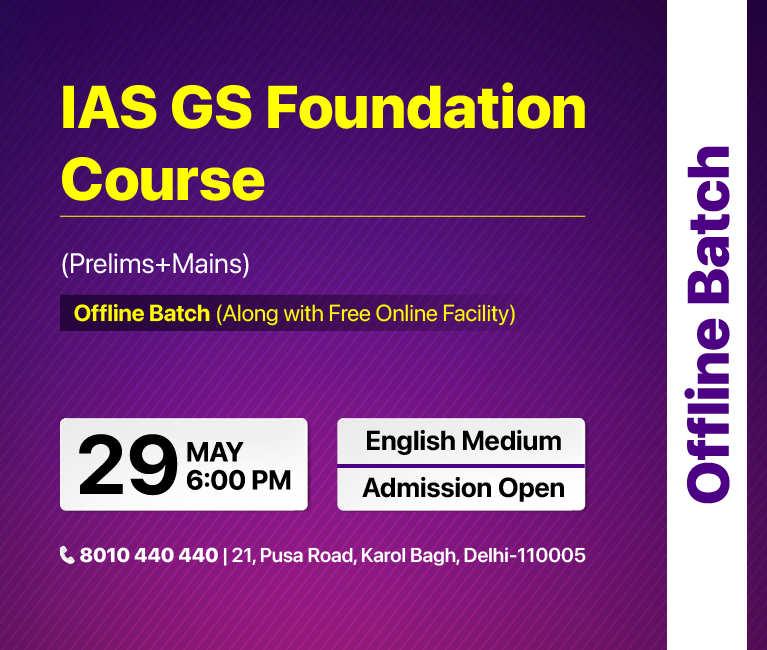
Ethics
Many Facets of Truth
For Prelims: Mahatma Gandhi, Non-violence (ahimsa), Satyagraha
For Mains: Dilemmas and Complexity of Truth, Moral dilemmas in Historical Narratives, Ethical Conduct, and Democratic Ethos, Relevance and Significance of the teaching of Mahatma Gandhi
Why in News?
For millennia, philosophers have wrestled with questions about the nature of truth, its knowability, and whether it is universal or subjective, leading to diverse perspectives on the concept.
What are the Various Thinkers' Perspectives on Truth?
- Correspondence Theory:
- Thinkers like Aristotle and Bertrand Russell assert that truth is determined by the correspondence between our statements or thoughts and the external world, meaning a statement is true if it accurately reflects reality.
- For example, "The grass is green" is true because the grass actually has the property of greenness in the real world.
- This theory doesn't account for abstract truths (e.g., mathematical theorems) that don't directly correspond to physical reality.
- Coherence Theory:
- Thinkers like Immanuel Kant and Friedrich Hegel assert that truth is determined by the internal consistency of ideas, where a statement is true if it coheres with an established framework of knowledge.
- For example, scientific theories are considered true if they are internally consistent and explain a wide range of phenomena.
- This theory can lead to closed belief systems that resist new evidence that contradicts the existing framework.
- Pragmatic Theory:
- Thinkers such as William James and John Dewey argue that the truth of a statement is determined by its practical usefulness and its ability to lead to successful outcomes.
- Example: The theory of gravity is considered true because it allows us to predict the movement of objects and build stable structures.
- This theory makes truth relative to context and doesn't account for objective facts independent of human usefulness.
- Mahatma Gandhi's Quest for Truth:
- Divine Truth and Non-Violence:
- Gandhi’s truth wasn't merely factual accuracy. He equated it with the ultimate reality, God itself.
- Truth is naturally obvious, but it becomes clear only when the ignorance around it is removed. This absolute truth could be understood through non-violence (ahimsa).
- His truth is not just a concept but an eternal principle equivalent to God, making the pursuit of truth and the practice of non-violence inseparable.
- The unending quest for truth involved introspection, continuous questioning, and the readiness to acknowledge errors, seeing truth as an ongoing journey of self-discovery rather than a set endpoint.
- Truth in Action:
- Gandhi's commitment to truth extended to his methods of protest. He devised Satyagraha, meaning "truth force."
- Satyagrahis, Gandhi's followers, aimed to awaken the conscience of the oppressor through acts of civil disobedience and unwavering truthfulness.
- Divine Truth and Non-Violence:
What are the Dilemmas and Complexity of Truth?
- The Complexity of Truth:
- The three lions on the Ashokan pillar, part of India's national emblem, symbolise three perspectives of truth: my truth, your truth, and an observer's truth.
- The fourth, unfathomable dimension of truth often leads to the saying, "God only knows the truth."
- For example, during an election, the task of the Election Commission of india becomes challenging.
- The challenge lies in political parties often engaging in caste or communal speech by use of clever language which makes it difficult for the election commission to act.
- The Model Code of Conduct (MCC) though bans explicit appeals on these grounds, but loopholes let political parties make divisive statements indirectly.
- The Dilemma of Truth and Deception:
- Historical and mythological narratives, like Yudhishthira's half-truth in the Mahabharata, illustrate the ethical dilemmas faced when truth is manipulated.
- Yudhishthira's declaration of Ashwathama's death led to a misinterpretation that caused Dronacharya's demise.
- This story underscores the moral complexities that arise when truth is bent for strategic purposes, highlighting the potential loss of moral high ground.
Conclusion
- The principle of "Satyameva Jayate" remains a guiding light for India's democratic ethos.
- However, the practical application of this principle in our day-to-day lives demands a robust commitment to ethical conduct by all stakeholders.
- It must be supported by a collective moral awakening among political leaders and citizens alike.
- Ensuring that truth triumphs in the democratic process requires continuous vigilance, introspection, and an unwavering commitment to rule of law and ethical values.
|
Drishti Mains Question: Q. In context of effective governance and policymaking, discuss the significance of recognising the diverse dimensions of truth in comprehending societal realities, with examples from contemporary events. |
UPSC Civil Services Examination, Previous Year Question (PYQ)
Mains:
Q. “Corruption causes misuse of the government treasury, administrative inefficiency, and obstruction in the path of national development.” Discuss Kautilya’s views. (2016)
Q. What does each of the following quotations mean to you? (2021)
(a): “Every work has got to pass through hundreds of difficulties before succeeding. Those that persevere will see the light, sooner or later.”- Swami Vivekananda
(b): “We can never obtain peace in the outer world until and unless we obtain peace within ourselves.”– Dalai Lama
(c): “Life doesn’t make any sense without interdependence. We need each other, and the sooner we learn that, it is better for us all.”- Erik Erikson

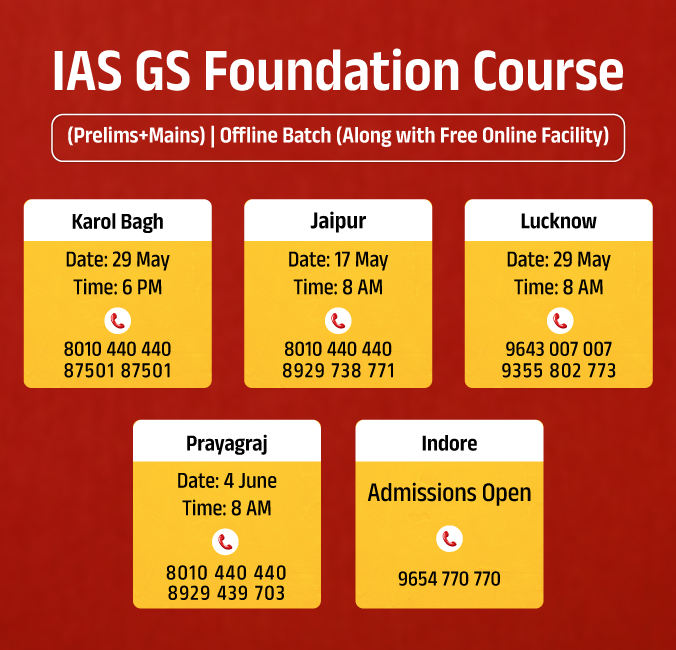
Biodiversity & Environment
World Environment Day 2024
For Prelims: World Environment Day, United Nations Assembly, Stockholm Conference, COP, NAP, LiFE Movement.
For Mains: World Environment Day, Need to Conserve Environment and Related Initiatives
Why in News?
World Environment Day is celebrated on 5th June every year to encourage awareness and environmental protection.
- In a remarkable initiative to combat deforestation and restore biodiversity, two environmentalists have spearheaded the creation of India's first biospheres within tiger reserves.
India’s First Biosphere in a Tiger Reserve
- Recently two environmentalists, Jai Dhar Gupta and Vijay Dhasmana created India's first biosphere in a tiger reserve, called the Rajaji Raghati Biosphere (RRB) within the Rajaji National Park in Uttarakhand.
- The biosphere is a 35-acre private forest initiative aimed at identifying and reviving rare and endangered species of native trees while protecting the area from poachers and mining.
- The land earmarked for RRB was previously barren and in a state of degradation.
- They are also developing a second biosphere above the Koyna River in the buffer zone of the Sahyadri Tiger Reserve near Pune, Maharashtra, along the Western Ghats.
‘Ek Ped Maa Ke Naam’ Campaign
- It was launched by the Acting Prime Minister of India on World Environment Day on 5th June 2024 by planting a Peepal tree at Buddha Jayanti Park in Delhi.
- He urged the country to protect Mother Nature by making sustainable lifestyle choices and contributing in making our planet better.
What are the Key Facts About World Environment Day?
- About:
- The United Nations Assembly established World Environment Day in 1972, which was the first day of the Stockholm Conference on the human environment.
- World Environment Day (WED) is celebrated every year with a specific theme and slogan that focuses on the major environmental issues of that time.
- WED 2024 is hosted by Saudi Arabia.
- India hosted the 45th celebration of World Environment Day in 2018 under the theme ‘Beat Plastic Pollution’.
- WED celebration in 2021 kicked off the UN Decade on Ecosystem Restoration (2021-2030) which is a global mission to revive billions of hectares, from forests to farmlands, from the top of mountains to the depth of the seas.
- The theme for 2024:
- Land Restoration, Desertification and Drought Resilience
- Year 2024 also marks the 30th anniversary of the UN Convention to Combat Desertification (UNCCD).
- Significance of Land Restoration:
- Reverses Environmental Damage: Combats land degradation, drought, and desertification.
- High Return on Investment: Each dollar invested can yield up to USD 30 in benefits from healthy ecosystems.
- Boosts Communities: Creates jobs, reduces poverty, and improves livelihoods.
- Strengthens Resilience: Helps communities better withstand extreme weather events.
- Combats Climate Change: Increases carbon storage in soil and slows the pace of warming.
- Protects Biodiversity: Restoring just 15% of degraded land could prevent a significant portion of expected species extinction.
What is India's Contribution Towards Environmental Sustainability?
- Mission LiFE
- National Mission for Green India (GIM): It aims to increase forest/tree cover on 5 million hectares of land and improve the quality of forest/tree cover on another 5 million hectares.
- National Afforestation Programme (NAP): Under this, 21.47 million hectares of land have been afforested as of 2020.
- National Biodiversity Action Plan
- Nagar Van Yojana (Urban Forest Scheme): It focuses on developing mini urban forests or "Nagar Vans" within cities and towns.
- School Nursery Yojana: It encourages schools to develop their own nurseries.
- CAMPA Funds: The Compensatory Afforestation Fund Management and Planning Authority (CAMPA) has been established to promote afforestation and regeneration activities etc.
- These programs promote tree plantation on waste, vacant, and barren lands.
- Wetland Conservation:
- India expanded its Ramsar Site count to 80 in January 2024 by designating new sites in Karnataka and Tamil Nadu.
- 11 wetlands were added in August 2022 to commemorate India's 75th Independence anniversary.
- The Wetlands of India Portal serves as a knowledge hub for wetland managers and stakeholders, providing valuable information and resources.
- India expanded its Ramsar Site count to 80 in January 2024 by designating new sites in Karnataka and Tamil Nadu.
- Forest and Wildlife Conservation:
- India ranks third globally in net forest area gain over the past 15 years.
- The Forest Cover of India is 7,13,789 sq. km, which is 21.71% of the total geographical area of the country, as per the India State of Forest Report (ISFR) 2021.
- India celebrated 50 years of Project Tiger and 30 years of Project Elephant, demonstrating its commitment to species conservation.
- The 'Green Credit Program' has been introduced to incentivize tree plantation and restoration of degraded forest lands, contributing to climate action initiatives.
- Mangrove Restoration:
- The Government of India has implemented promotional and regulatory measures to protect and enhance mangrove forests in coastal States/Union Territories.
- A Central Sector Scheme called ‘Conservation and Management of Mangroves and Coral Reefs’ is being implemented under the National Coastal Mission Programme.
- The Mangrove Initiative for Shoreline Habitats and Tangible Incomes (MISHTI) was announced in the Union Budget 2023-24 to promote and conserve mangroves.
- Ban on Single-use Plastic:
- The Government has introduced amendments to the Plastic Waste Management Rules, 2016, through the Plastic Waste Management (Amendment) Rules, 2024.
- The rules prohibit the manufacture, import, stocking, distribution, sale, and use of identified single-use plastic (SUP).
- Push to Renewable Energy:
- The National Green Hydrogen Mission was launched in January 2023 with a Rs 19,744 crore investment, will be a game-changer for India's clean energy future.
- The mission aims to make India a self-reliant (Aatma Nirbhar) leader in green hydrogen production and technology.
- This green push will significantly reduce dependence on fossil fuels, decarbonize the economy, and inspire a global clean energy transition.
- Global Initiatives of India:
- India is a member of the Global Alliance for Circular Economy and Resource Efficiency (GACERE) and the Steering Committee of the International Resource Panel (IRP).
- These platforms advocate for a global and just circular economy transition and sustainable natural resource management.
- The sixth Assembly of the International Solar Alliance (ISA) was hosted in New Delhi on 31st October 2023, with participation from ministers and delegates from 116 Member and Signatory countries.
- India is a member of the Global Alliance for Circular Economy and Resource Efficiency (GACERE) and the Steering Committee of the International Resource Panel (IRP).
Report of Ministry of Coal on Environment Day
- Coal and Lignite PSUs under the Ministry of Coal are implementing measures to reclaim mined-out areas through extensive plantation efforts in and around coal-bearing regions.
- The Ministry of Coal has released a report titled "Greening Initiative in Coal & Lignite PSUs" highlighting the efforts of PSUs in restoring and rejuvenating mined-out lands.
- The report underscores the significant role that the coal sector can play in advancing the goals of land restoration and promoting environmental sustainability.
- Coal/Lignite PSUs have created a green cover of about 50,000 hectares in and around coal mining regions. This includes reclaiming de-coaled land, and planting trees within mine leaseholds, and outside leaseholds, which is estimated to create a carbon sink potential of around 2.5 million tonnes of CO2 equivalent per year.
- The initiative aims to boost India's green cover to support achieving the Nationally Determined Contribution (NDC) target of creating a carbon sink of 2.5 to 3.0 billion tonnes by 2030.
AQ-AIMS and Air-Pravah App
On World Environment Day, the Ministry of Electronics and Information Technology (MeitY) launched a significant step towards better air quality awareness and monitoring in India.
- AQ-AIMS (Indigenous Air Quality Monitoring System): This cost-effective, Indian-made system replaces expensive, complex traditional methods.
- Air-Pravah App: This mobile app provides real-time Air Quality Index (AQI) data, along with features like:
- Easy setup
- Live data visualisation
- Unit conversions for easy understanding
- AQI comparisons over time or location
- Multi-device support for convenient access
- Data analysis tools for deeper insights
- Remote monitoring for centralised data management
- Automatic updates for the latest information
- Benefits:
- Affordable and user-friendly air quality monitoring.
- Faster environmental clearances with accurate data.
- Potential for improved public health through informed decisions (e.g., wearing masks during high pollution).
- Technical Details:
- AQ-AIMS is validated for monitoring PM (various sizes), SO2, NO2, O3, CO, CO2, temperature, and humidity.
- Developed through a collaborative effort between C-DAC Kolkata, TeXMIN (ISM Dhanbad), and JM Envirolab Pvt Ltd under the 'AgriEnIcs' program.
|
Drishti Mains Question: Explain India's challenges and opportunities in land restoration. Suggest policy measures to achieve UN Decade on Ecosystem Restoration goals. |
UPSC Civil Services Examination Previous Year Question (PYQ)
Prelims
Q. The term ‘Intended Nationally Determined Contributions’ is sometimes seen in the news in the context of (2016)
(a) pledges made by the European countries to rehabilitate refugees from the war-affected Middle East
(b) plan of action outlined by the countries of the world to combat climate change
(c) capital contributed by the member countries in the establishment of Asian Infrastructure Investment Bank
(d) plan of action outlined by the countries of the world regarding Sustainable Development Goals
Ans: (b)
Q. Consider the following statements: (2016)
- The Sustainable Development Goals were first proposed in 1972 by a global think tank called the ‘Club of Rome’.
- The Sustainable Development Goals have to be achieved by 2030.
Which of the statements given above is/are correct?
(a) 1 only
(b) 2 only
(c) Both 1 and 2
(d) Neither 1 nor 2
Ans: (b)
Mains
Q. Describe the major outcomes of the 26th session of the Conference of the Parties (COP) to the United Nations Framework Convention on Climate Change (UNFCCC). What are the commitments made by India in this conference? (2021)
Q. Access to affordable, reliable, sustainable and modern energy is the sine qua non to achieve Sustainable Development Goals (SDGs).” Comment on the progress made in India in this regard. (2018)


Important Facts For Prelims
Conservation Breeding in Indira Gandhi Zoological Park (IGZP)
Why in News?
Recently, the Indira Gandhi Zoological Park (IGZP) in Visakhapatnam has been at the forefront of wildlife conservation in India, particularly in the successful breeding and nurturing of Striped hyenas and Asiatic wild dogs (Dhole).
What are the Key Points About Indira Gandhi Zoological Park (IGZP)?
- It is an ex-situ facility established in 1977, located amidst Seethakonda Reserve Forest in the Visakhapatnam district of Andhra Pradesh.
- It is surrounded by Eastern Ghats on three sides and the Bay of Bengal on the fourth side.
- It is a large category zoo recognised by the Central Zoo Authority.
- Due to its close proximity to Kambalakonda Wildlife Sanctuary it is also home to many free-ranging animals and birds.
- IGZP has successfully bred striped hyenas, wild dogs, Indian grey wolves, ring-tailed lemurs, Indian bison, blue and gold macaws, jungle cats, and eclectus parrots.
Asiatic Wild Dogs (Dhole)
- About:
- Dhole (Cuon alpinus) is a wild carnivorous animal and is a member of the family Canidae and the class Mammalia.
- Habitat:,
- Historically widespread across southern Russia to southeast Asia, they are now mainly found in south and southeast Asia, with northern populations in China.
- In India, they are clustered in the Western and Eastern Ghats, central India, and northeast India.
- Conservation:
- Wildlife Protection Act, 1972: Schedule II
- International Union for Conservation of Nature's Red List: Endangered
- The Convention on International Trade in Endangered Species of Wild Fauna and Flora (CITES): Appendix II
- The creation of reserves under Project Tiger provided some protection for dhole populations sympatric with tigers.
Striped Hyenas
- About:
- The Striped hyenas (Hyaena hyaena) are one of the three hyena species.
- Other hyena species include Brown hyenas, and Spotted hyenas (the largest).
- They are smaller and less social than the more well-known Spotted hyena.
- The Striped hyenas (Hyaena hyaena) are one of the three hyena species.
- Challenges to Conservation: Habitat loss, human-wildlife conflict, poaching, and illegal wildlife trade.
- Protection Status:
- IUCN Status: Near Threatened
- Wildlife Protection Act, 1972: Schedule I


Important Facts For Prelims
Colombo Process
Why in News?
Recently, India has become chair of the regional grouping Colombo Process for the first time since its inception in 2003.
- India would lead the grouping for the period 2024-26.
What is the Colombo Process?
- About:
- The Colombo Process comprises 12 Asian member states and serves as a regional consultative forum. It aims to promote the sharing of best practices related to overseas employment for countries in South and Southeast Asia that send migrant workers abroad.
- The 12 member states include Afghanistan, Bangladesh, Cambodia, China, India, Indonesia, Nepal, Pakistan, the Philippines, Sri Lanka, Thailand, and Vietnam.
- The founding states include Bangladesh, China, India, Indonesia, Nepal, Pakistan, the Philippines, Sri Lanka, Thailand, and Vietnam.
- In the past, it has been chaired by Afghanistan, Nepal, Sri Lanka, the Philippines, Indonesia, and Bangladesh.
- The decisions under Colombo Process are made by consensus and are non-binding.
- Objectives:
- Share experiences, lessons learned and best practices.
- Consult on issues faced by overseas workers, and offer practical solutions.
- Optimise development benefits from organised overseas employment.
- Review and monitor the implementation of the ministerial recommendations.
- Secretariat: The International Organisation for Migration (IOM) provides technical and administrative support to the Colombo Process.
- The Colombo Process Technical Support Unit (CPTSU), based in Sri Lanka, provides technical support to the Colombo Process in its thematic areas of focus.
- Five Thematic Priority Areas:
- Skills and Qualification Recognition Processes
- Fostering Ethical Recruitment Practices
- Pre-departure Orientation and Empowerment
- Promote Cheaper, Faster and Safer Transfer of Remittances
- Labor Market Analysis
- Achievements:
- A regional workshop for employment agencies in Asia on placing workers in Europe and ethical recruitment was held in Manila (2006).
- A feasibility study to establish an Overseas Workers Resource Centre (OWRC) in one of the contractual labour destination countries in the Gulf Cooperation Council (GCC) has been completed.
- Organised the first "Asia-EU Consultation on Labour Migration" held in Brussels in 2008 attended by Colombo Process countries and 16 EU member states.
International Organisation for Migration (IOM)
- It is part of the United Nations System as the leading inter-governmental organisation promoting since 1951 humane and orderly migration for the benefit of all, with 175 member states and a presence in 171 countries.
UPSC Civil Services Examination Previous Year Questions (PYQs)
Prelims
Q. India is a member of which of the following? (2008)
1. Asian Development Bank
2. Asia-Pacific Economic Cooperation
3. Colombo Plan
4. Organization for Economic Cooperation and
Development (OECD)
Select the correct answer using the code given below Code:
(a) 1 and 3 only
(b) 2 and 4 only
(c) 1, 2 and 3 only
(d) 1, 2, 3 and 4
Ans: (a)


Rapid Fire
Preston Curve
The Preston curve refers to the empirical relationship between life expectancy and per capita income in a country, proposed by American sociologist Samuel H. Preston in 1975.
- The curve shows that people in richer countries generally have longer life spans compared to those in poorer countries, likely due to better access to healthcare, education, nutrition, etc.
- As a poor country's per capita income rises, its life expectancy increases significantly initially.
- For example, India's per capita income rose from Rs 9,000 in 1947 to
- Rs 55,000 in 2011, while life expectancy increased from 32 to 66 years.
- However, the positive relationship between per capita income and life expectancy starts to flatten out beyond a certain point, as the human lifespan cannot be increased indefinitely.
- The positive relationship shown by the Preston curve applies can also be applied to other development indicators like infant/maternal mortality, education, healthcare, etc.


Rapid Fire
Kenya-India Collaboration on Cheetah Conservation
Recently, a Kenyan delegation visited India to discuss collaboration on wildlife conservation efforts, with a particular emphasis on the ongoing Cheetah Reintroduction Project (Project Cheetah).
- The delegation presented a draft MoU to the National Tiger Conservation Authority (NTCA) proposing collaboration.
- It along with capacity building and knowledge sharing, also included provisions for supplying equipment to Kenyan forest rangers to enhance field patrolling and wildlife preservation efforts.
- Project Cheetah:
- The Phase-1 of the project started in 2022, to restore the population of cheetahs, which were declared extinct in the country in 1952.
- It involves the translocation of cheetahs from South Africa and Namibia to Kuno National Park.
- The project is implemented by the NTCA in collaboration with the Madhya Pradesh Forest Department, and Wildlife Institute of India (WII).
- Under Phase-2 of the Project India is considering sourcing cheetahs from Kenya due to similar habitats.
- Cheetahs will be translocated to Kuno National Park and Gandhi Sagar Wildlife Sanctuary (Madhya Pradesh).
- The Phase-1 of the project started in 2022, to restore the population of cheetahs, which were declared extinct in the country in 1952.
Read more: One Year of Project Cheetah, Reintroduction of Cheetah, Cheetah Cubs in Kuno National Park


Rapid Fire
Supreme Court Mandates Self-Declaration by Advertisers
Recently, the Supreme Court of India has ordered that all advertisers/Advertising Agencies must submit a 'Self-Declaration Certificate' before publishing or broadcasting any advertisement.
- This aims to ensure transparency, consumer protection, and responsible advertising practices.
- These will apply to all new advertisements from 18th June 2024.
- It will also ensure compliance with all relevant regulatory guidelines, including those given in Rule 7 of the Cable Television Networks (CTN) Rules, 1994 and the Norms of Journalistic Conduct of the Press Council of India.
- Rule 7 of CTN provides that advertisements must comply with Indian laws and avoid offending the morality, decency, and religious sensitivities of viewers.
- A certificate signed by an authorised representative of the advertiser can be submitted in Broadcast Seva Portal (For TV/Radio Advertisements) and Press Council of India portal (For Print and Digital Media Advertisements).
- Advertisers need to provide proof of uploading the Self-Declaration Certificate to the relevant broadcaster, printer, publisher, or electronic media platform for their records.
Read more: Regulating Misleading Advertisements in India, Changes in Cable Television Network Rules, Disclosure of Journalistic Sources


Rapid Fire
PraVaHa Software
Recently, the Indian Space Research Organisation (ISRO) has developed Computational Fluid Dynamics (CFD) software named Parallel RANS Solver for Aerospace Vehicle Aero-thermo-dynamic Analysis (PraVaHa).
- PraVaHa is a software tool specifically designed to analyse the aerodynamics and thermodynamics of aerospace vehicles like launch vehicles and winged and non-winged re-entry vehicles.
- It simulates how air flows around aerospace vehicles and calculates the resulting forces and heat effects which is essential to design the shape, structure, and Thermal Protection System (TPS) required for these bodies.
- It has been extensively used in the Gaganyaan program for aerodynamic analysis of human-rated launch vehicles, such as HLVM3, Crew Escape System (CES), and Crew Module (CM).
- Any aerospace vehicle while moving through the Earth’s atmosphere during launch or re-entry is subjected to severe aerodynamic and aerothermal loads in terms of external pressure and heat flux.
- Computational Fluid Dynamics (CFD) is one such tool to predict the aerodynamic and aerothermal loads which solve numerically the equations of conservation of mass, momentum, and energy along with the equation of state.



